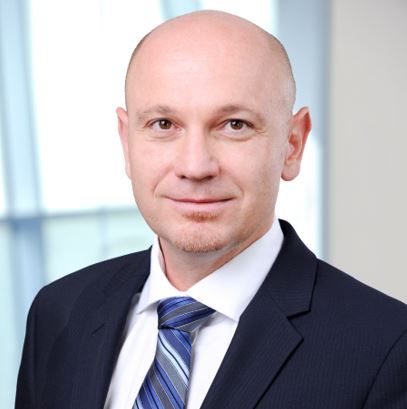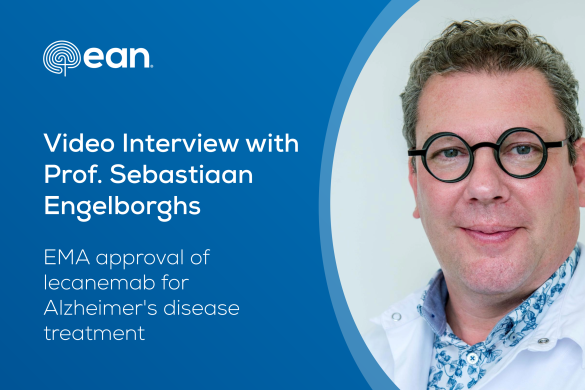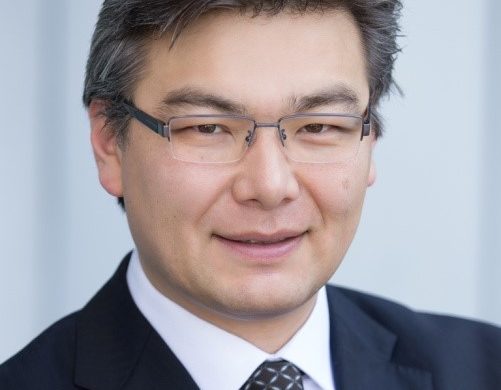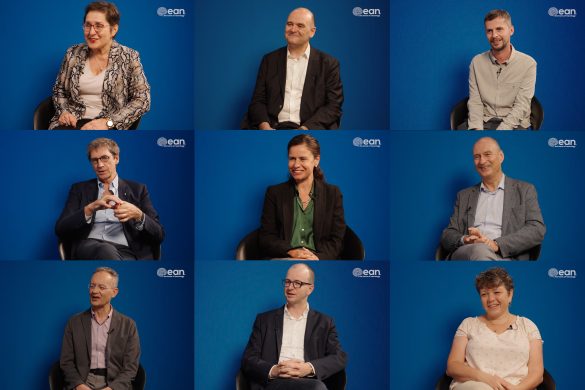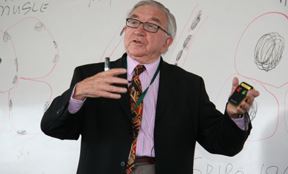 Olivier Rascol is Professor of Clinical Pharmacology at the University Hospital in Toulouse, France and Chair of the Movement Disorder Society-European Section
Olivier Rascol is Professor of Clinical Pharmacology at the University Hospital in Toulouse, France and Chair of the Movement Disorder Society-European Section
(MDS-ES)
Gian Luigi Lenzi (GLL): As Chair of the MDS-European Section, can you illustrate the role you would like the EAN to cover within the world of European Neurology?
Olivier Rascol (OR): In my view, the EAN has crucial strategic and practical roles to cover in order to reinforce the knowledge of neurological disorders and improve the care of neurological patients in Europe and worldwide. As the strongest and unique Society promoting Clinical Neurology in Europe, the EAN will collaborate with patient associations, other scientific societies, regulatory agencies, pharmaceutical industries and other comparable international entities like for example the American Academy of Neurology. This will allow defining strategic roadmaps to develop and improve key issues related to neurology, including communication and awareness, education, best medical practice and management, research, etc… The EAN will obviously work towards excellence in education and training in neurology, producing recommendations and guidelines in this field and pay efforts in reducing the gap in the care of neurological disorders throughout Europe. I also expect that the EAN will be a forum encouraging cross-interest approaches and bridging gaps between the different sub-specialties of neurology, between pre-clinical and clinical research and opening more broadly neurological sciences to the society and its needs.
GLL: It is the EAN’s goal is to be the overall umbrella for neurology and neurology related specialties. How do you see MDS – European Section working together with the EAN? Which kind of educational as well as cultural initiatives can be initiated together by the EAN and the MDS-European Section?
OR: Most movement disorders are caused by neurological disorders. As so, improving their knowledge and the care of patients suffering from such disorders in Europe is in the scope of 2 major societies, namely the EAN and the International Parkinson disease and Movement Disorders Society (MDS). The MDS is organised into regional sections for the different parts of the world, and there is a European Section of the MDS (MDS-ES), in charge of running educational programs on movement disorders in this region. The MDS-ES and the EAN obviously share common objectives to improve by all possible means the knowledge and management of movement disorders. During the last decade, MDS-ES and the past EFNS have worked together synergistically in order to avoid competition and duplications of efforts and meetings and this collaboration has proven to be very successful.
As the current chair of the MDS-ES, I am strongly supporting the concept that this previous agreement between the EFNS and the MDS-ES serves as a model for establishing collaboration between the EAN and the MDS-ES for the future. Our two societies are currently working on this project and I am quite optimistic about its outcome. Overall, its general principle is that the MDS-ES would run movement disorders sessions within the annual congresses of the EAN, thus avoiding wasting time and money for an independent parallel MDS-ES annual congress. Apart from the annual meetings, this agreement would also encourage and reinforce joint educational initiatives and funding strategies for important programs toward training doctors, neurologists, allied health professionals and patients with movement disorders in different parts of Europe.
GLL: What is your view on the future of the educational grants for young neurologists? Can you see possible co-operation between the MDS and the EAN in this field?
OR: There are many key educational and training domains where the MDS-ES and the EAN could and should cooperate to improve the knowledge and management of movement disorders in Europe. A variety of initiatives can be envisioned, including continuing and expending existing ones (such as educational grants to allow candidates to visit and stay long enough to learn in internationally recognised European reference centres for Movement Disorders) or organising new ones (like for example implementing focused workshops or local teaching courses, developing e-learning …) in order to:
– raise the interest of young neurologists for movement disorders
– improve diagnosis and treatment of movement disorders among physicians and general neurologists, focusing not only on common movement disorders like Parkinson’s disease, but also on less frequent but important ones like tremor, dystonia, Huntington disease, tics, atypical parkinsonism, myoclonus and others, and encouraging transversal disciplines within neurology like neuro-epidemiology, neuro-imaging, neuro-physiology, neuro-pharmacology and others
– encourage teaching basic neurosciences to clinicians and vice-versa
– offer specific opportunities to underserved areas within Europe (e.g. Eastern European countries) or out of Europe (e.g. Africa for example)
– train allied health professionals (physiotherapists, speech therapists, psychologists, occupational therapists, etc…) as a multidisciplinary approach is becoming more and more important to improve the care of patients with movement disorders and neurodegenerative disorder.
GLL: Can you share with our readers your vision on how Neuropenews can help strengthen the EAN’s identity?
OR: I see Neuropenews as a modern, flexible and efficient tool to raise people´s awareness and understanding of the EAN initiatives and make them feeling to belong to the same academic European community. It should allow publishing the ongoing and future strategic, educational and research activities of the EAN within the different sub-specialities of neurology within European countries and across Europe. Exchanging past experiences and reporting on previously obtained successful stories should allow others to build on achievements, facilitating thus future accomplishments. It seems to me that Neuropenews should be an excellent instrument to improve communication and exchanges within neurology and related scientific and medical specialities.
GLL: You are Professor of Clinical Pharmacology, but since the beginning of your scientific career you have been very near to neurology, as I have personally witnessed. Could you tell our younger readers something more about your scientific career and what you considered its “turning points”?
OR: I am a neurologist by training and I continue, as a clinician, to diagnose, follow-up and treat patients with movement disorders at the department of neurology of the Toulouse University Hospital. I feel this as a mandatory activity to keep a close contact with patients’ needs. But besides this long-lasting and sustained medical practice, I have developed early in my academic career a special curiosity and interest for physiology and pharmacology, in order to better understand the mechanisms causing movement disorders and explaining the effects of their treatments. For that purpose, I worked in basic sciences and got a PhD in experimental therapeutics after my MD, in the mid-eighties. My ambition was to optimise the translation of pre-clinical discoveries into clinical practice, based on objective methods rather than empirical experience, which was the rule at this time. I therefore logically moved from animal models into clinical trials and clinical neuropharmacology, a field that was quite underdeveloped in movement disorders in these times. I was fortunate enough within the last 3 decades in contributing to bringing to the market a number of new dopaminergic antiparkinsonian medications including dopamine agonists like ropinirole, pramipexole or rotigotine, MAO-B inhibitors like rasagiline and COMT inhibitors like entacapone.
I was excited, and still feel so, to test scientifically in patients the effects of new drugs on motor symptoms, to work with new concepts that moved from dopamine to non-dopamine targets, from oral to non-oral drug delivery and from short-term symptomatic management to long-term “disease modification” of neurodegenerative disorders. Such activity in clinical neuropharmacology is a lot of fun because it requires close collaborations between basic scientists, clinicians, methodologists and pharmaceutical companies at the international level. The field has dramatically expended as novel approaches have emerged to drive future progresses, based not only on pharmacological innovation, but also on genetics, new techniques and non-pharmacological interventions using devices, surgery, biotherapies…
It has been a major milestone in my career to realise how patients with movement disorders were disabled by a broad spectrum of non-motor symptoms, including sleep problems, dementia, autonomic dysfunction, pain, mood and behavioural modifications and others. It was a shock when we realised how long and how much we had ignored these major aspects of “movement disorders” that we did not really know how to treat, and to admit that such symptoms occurred long before motor symptoms could be detected, leading to the concept of “pre-motor” or even “pre-symptomatic” phases of these disorders, opening the field for future truly preventive goals. I was also astonished how long it took before neurologists admitted the reality and the importance of troublesome drug-induced side effects like daytime sleepiness and impulse control disorders. All these events expended substantially the field of neuropharmacology of “movement disorders”, encouraging the development of new models, new techniques, new collaborations, new outcomes and new designs for clinical trials.
It has been a refreshing experience for me to participate into the demonstration of new unexpected properties of “old” drugs, like for example the anti-dyskinetic properties of amantadine for the treatment of L-DOPA-induced dyskinesia. I should not underestimate here the importance of other therapeutic issues I have been interested in, like for example defining the best possible strategies to manage on the long-term patients with movement disorders. This means not simply looking at the short-term benefit-risk ratio of one single therapeutic intervention but rather focusing on the different possible combinations of different pharmacological and non-pharmacological interventions, including drugs, physiotherapy and surgery. Should we use them together simultaneously or sequentially? Should we start patients with Parkinson’s disease on L-DOPA early or late? When is physiotherapy most useful? When is the most appropriate time to offer deep brain stimulation to our patients? Such questions raise complex practical, methodological and economic problems. These are beyond the scope of regulatory Phase III trials, classically sponsored by private drug companies, and require novel public network organisation and funding, with appropriate solutions coming probably at the European level. I also hope that the time will come when the progresses of pharmaco-genetics will allow offering patients with movement disorders a “personalized” approach, on the model of what has been successfully achieved in other medical areas like thrombosis or cancer. Finally, I would also like to emphasise at this point the importance of applying to the field of movement disorders and neurology in general other important but still under-used pharmacological approaches, including pharmaco-epidemiology to better understand the diversity of patients’ care in different European countries, and learn from such discrepancies how to improve our practice, and pharmaco-economy to encourage novel public health perspective, assess how resources are used and allocated to treat movement disorders in Europe and then be optimised. And I hope that all these exciting opportunities will raise the interest of many young neurologists!




